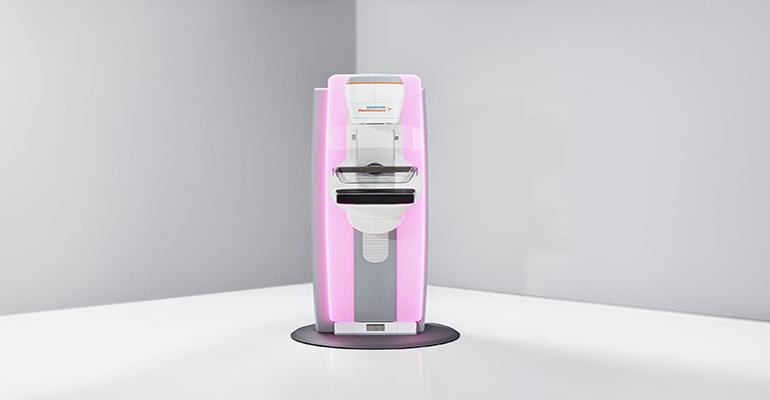Breast cancer kills more women than any other cancer. The World Cancer Research Fund reports that it represents 25 per cent of all cancers in women, with 2.3 million being diagnosed in 2020 alone. In the same year, 685,000 women died of the disease. Worryingly, the annual global incidence of breast cancer is increasing because of changing lifestyles in developing regions.
The good news is that breast cancer screening technologies have come on in leaps and bounds in recent years. 3D mammography systems – also known as digital breast tomosynthesis (DBT) - provide clinicians with three-dimensional, high-resolution images of early-stage breast cancer – even in those without symptoms.
Women seeking the most advanced and efficacious mammograms should seek out DBT from their healthcare providers because of their ability to achieve better depth resolution and tissue separation. Companies that pioneer such technologies include Siemens Healthineers, which has developed a ‘MAMMOMAT’ Revelation DBT system with a 50° Wide-Angle Tomosynthesis. This wide-angle system enables doctors to see the deep tissue of the breast in greater detail, detect cancers at an early stage, deliver better and less aggressive treatment options and improve survival rates.
The benefits of gaining mammography images through DBT over traditional 2D projections is so significant that it is quite likely that they will soon become the industry standard.
Integrating software
Once taken, those images can now be analyzed in much greater detail through advanced software platforms, making it possible for radiographers to achieve very detailed Volumetric Breast Density Assessments. The integration of these breakthrough imaging technologies with advanced analytical software programs helps medics to gain an even greater insight into the nature of breast tissue composition, breast density and the likelihood of the presence of cancer cells.
Artificial intelligence
The implications for survival rates are significant. Now, with the acceleration of AI-based machine learning (ML) algorithms, vast quantities of historic data can be processed to create statistical predictions – and research shows that it is highly accurate. One such study reclassified 35 per cent of its standard DNA-based analyses after ML-based algorithms were applied. This represents an exciting new dawn in early-stage diagnosis and in the fight against breast cancer.
These innovations make it possible for clinicians to analyze and report on the results of mammograms in record time. Healthcare innovators have come to market with new software solutions that speed up the entire workflow for breast imaging, with dashboards that make reading and understanding mammography images much faster. In essence, this means that radiographers and oncologists can work at pace and accurately classify patients depending on need, in record time.
These easy-to-use dashboards flag up abnormalities in breast tissue and offer a so-called ‘confidence score’ - the probability of cancerous tissue developing. By implementing evidence-based AI, a significant increase in accuracy and a 35% reduction in workload can be achieved. This allows doctors to deliver much more accurate diagnoses and process more patients, faster – speeding up and improving the breast health journey from discovery to recovery.
A holistic breast health journey
These advanced technologies are, however, most effective when they form part of a holistic, personalized 360° approach along every step of the breast health journey. Bespoke care pathways that are human-centric and complemented by technologies, can help a doctor to walk women through the journey from early-stage discovery to recovery. It is a journey that can now also be made safer through the use of low-dose mammography systems such as those from Siemens Healthineers, which use 30 per cent less radiation than traditional alternatives.
Underserved communities
As advanced technologies become more commonplace, modern lifestyles in the developing world are becoming more ‘westernized’, creating breast cancer distribution that is becoming closer in profile to that of women in industrialized nations. Therefore, policymakers, community doctors, oncologists and innovators must actively promote self-examination techniques and discuss the intrinsic value of early diagnosis methods and technologies with women in all communities. This requires a shift in mindset from reactive to preventative healthcare provision even in the most medically underserved parts of the world.
October was Breast Cancer Awareness month, which provided an impetus for all stakeholders to push harder to raise awareness of breast cancer prevention and treatments. Across all regions but particularly in the developing countries, the suspicion of breast cancer can fuel uncertainties, fear, and cultural taboos. Wherever they are, women deserve to understand how to self-examine, what to look for and what to ask for from medics. Together, through the provision of holistic breast health journeys and the incredible potential of artificial intelligence, we can help women all around the world to achieve early diagnosis and beat breast cancer.


